Pinnacle of Japanese dining experiences
This was a very rare treat to have and be able to write about. To give you an idea why, when I last visited Kyoto in the Spring of 2018, I enquired about making a reservation for this visit in late 2019 and the answer from the head concierge at The Ritz Carlton, Kyoto was on par with Sir Humphrey Appleby shaking his head at the Prime Minister simply smiling and saying, “…that, could be tricky…” (i.e. impossible, even with a year and half’s notice). As it happened, the category 9 typhoon that occurred on this second visit caused cancellations to flights into Japan and to our amazement, the Okura hotel, Kyoto (where we were staying) sent a message the day after our arrival to say that we had gained a place at Mizai (with three exclamation marks). This turned out to be nothing short of a blessing – I had heard the hype of this restaurant but reserved judgement, based on previous anti-climaxes, but when all was said and done, I can confirm that this was essentially the meal to end all meals for the reasons at the expansion button. Cash only, no pictures of the meal allowed and a rather hefty £420 per head, but I will cherish this meal memory forever. Allow me to explain…
Mizai is located on the edge of the historic Maruyama Park, which is a beautifully preserved public park near the Yasaka Shrine in the Higashiyama District. Aside from the iconic temples scattered all around, all with lanterns at night, the park holds distinct cherry blossom trees, one of which is a famed shidarezakura, a rare and tall, weeping cherry blossom that people queue to see in the Hanami (cherry blossom season in late April / early May) which I have been lucky enough to see at this time. Incidentally, if you visit for this, you will not be alone as the visitor numbers can be insane at this period, with many Japanese families travelling to Kyoto (above the hoard of tourists) dressing up in full, traditional Kimono dress to have family photos with the iconic trees in the background. But please trust me when I say this is an annual, spectacle of the earth and life tick to have if you can squeeze in.
Our taxi pulled up as close to the restaurant as it could, there at the top of an ancient stone staircase, a restaurant representative stood waiting to escort us to the restaurant from where we were dropped off. With the walkway and trees lit up at night, this genuinely felt on a par with what entering Nania for the first time must be like as we made our way down the steps to what was still a mystery at this stage.
After our names were taken outside the venue at the front of the restaurant, we were invited to have a seat outside whilst the staff finished preparing the restaurant and given a welcome drink of lightly salted water and puffed rice – a simple and welcome combination, similar to that had at Kitcho, another 3 Michelin starred Kaiseki restaurant only that afternoon (a pretty marvellous day overall). Once finished, we were invited to the main dining room which, in keeping with the setting of this restaurant is beautifully designed, with a deliberate view of a manicured garden in the background, displaying a simple plaque above the restaurant window, baring the name of Mizai in Kanji.
The main restaurant seats 14 at the main counter and a further 6 in the private dining area behind the main counter and towards the back of the restaurant (this enclosure has a window looking to the counter but is discreet enough for privacy as well). Other lovely, minimalist enclaves of the restaurant had simple scrolls of Kanji, one loosely translating to “My heart is devoted to the Autumn” and another, outlining words to the effect of, “Magnificent chrysanthemum flowers of Autumn”. Seasonal produce is obviously at the heart of this restaurant and the beautifully written scrolls not only decorating the restaurant simply and perfectly but also outlining the philosophy of the team behind it so appropriately. These poetic scrolls change according to the season.
On to the meal and my apologies for not being able to expand as much as I would like to, but the staff only spoke so much English and there was an obvious air of being bad etiquette to strike up too much of a conversation over the food. For the privilege it was and the fact that I and my dining companion were the only non-Japanese speakers at this service, we did not feel like holding up the show for the others asking too many questions – tactically placed questions, of course. A miscellaneous point is that based on the body language of the staff alone, this was altogether a different service feel than at Jiro, had days before (a good thing). Early on in the meal the head chef, Hitoshi Ishihara, looked at us in a frown as his watchful eye saw that we did not have any sake causing him to turn to one of his assistants and asked why this was the case. I can answer this one – the main reason being that there are no prices on the wine list for any of the drinks. As this almost felt like asking how much a diamond necklace in Graff is (if you have to ask, you don’t belong there), we were a little hesitant as the restaurant is cash only and did not want to risk having a bottle of sake costing another £400 – thankfully a reasonable option at around a tenth of this at £40 was available which we just found out through the friendly help of a Malaysian couple to our left, so this was opted for(!).
The meal began with ‘five shades of mushroom’ sliced and intertwined together to make a spaghetti-like ball of mushroom, held together by a paste of the mushrooms used. A dashi with carrot and carrot side was also served with this dish and was a delightful start. I took a photo of this opening dish and a gentleman diner next to me looked at me in horror and shook both hands to signal ‘don’t do it’. A bit of a shame, but the police enforcement of no photos seemingly done more so by regulars than the actual staff. This explains the lack of photos in this review.
Next up was the sashimi which included a sumptuous sea bream liver, delicately fried bream skin, yellowtail, otoro (full fat tuna) and squid, all served with gorgeous ponzu, saltwater and sesame sauces. If this was not enough, the offering included vinegared, soy jelly cubes which were without a doubt the greatest play and version of soy sauce I have ever come across – genuinely a breathtaking version of soy sauce with the perfect play of sweet and salty at the same time and with magnificent texture to compliment the sashimi perfectly. I don’t blame you for thinking “it’s just soy…” but you simply had to have this to appreciate.
Next came tail fish and tuna paste in a bowl of matsutake mushroom broth which had a perfume of mushroom leaping out through the steam from the bowl, hitting your nostrils prior to any leaning in. The slices of yuzu in this also gave this a lovely punch of citrus to balance and this was superbly balanced. Next came superb A4 wagyu beef with blobs of apple and miso on top as an absolute knock out combination (who thinks of this?!) and a green chilli salad made with a red wine, honey and vinegar dressing. Words fail me at how stunning this dish was in every way – the quality of the beef, the combination of the original gel on top, the faint heat from the chilli as well as the crunch from the salad and the delightfully sweet and acidic overtones from the dressing – I’m almost welling up as I write this knowing, the scale of what I had here in this dish hitting home again. As ever, my associate Mr Bainbridge concurred with this sea shift moment of a dish and we both wished time to simply slow down.
Eel in dashi (a broth of kelp and bonito flakes, fundamental to Japanese and Kyoto cuisine) was a salty and pleasing boiled follow up dish. This was effectively a palette wash prior to the main event which was a simply stunning platter holding an assortment of sculpted and carved fried tempura and raw vegetables and fish in presentation. Tempura Ayu, or sweetfish (a relative of the smelt family) from Nakaumi (south Japan) was served with chestnuts, yam, matsutake mushrooms, duck pieces and herring amongst the array served with an outrageously good mustard (for the duck) and salmon roe within a mini, ceramic, mollusc shell. The platter was decorated with seasonal leaves that had been locally picked by the staff earlier that day and not only visually fit for Royalty, but it also held at least two powerhouse moments of flavour.
This nakazara or main dish was followed by the boiled (nimono) dish of abalone, yuzu and turnip which was not the height of the meal, but well-matched at the same time, followed by horsehair crab and grilled barracuda in two separate and ornately designed ceramic bowls. The quality of both the crab and the fish were simply at the top of the tree. Finally, the traditional rice and pickles were served in a different way with the rice having slightly burnt rice on the top layer, above the fluffier and normal version, giving the rice a completely different texture and smokey quality – a brilliant touch. The pickled vegetables displayed the five primary colours of Kaiseki cuisine – white (from the tofu), red (radish shavings), yellow (sweet potato), green (komatsuna – mustard spinach) and dark brown/black (seaweed with soy) – to finish the savoury dishes off, virtually in the same manner of an artist finishing on this poignant note.
Then came one of the nicest touches of the dining experience, perhaps of any dining experience. The lights were dimmed and the matcha tea was prepared personally by the head chef, making each one in turn for each guest. Before any of this, the head chef inspected each matcha pot and briefly examined all his diners and paired the matcha pots to each guest according to how he saw the best fit. Each serving of matcha was made in keeping with the traditional tea ceremony of Kyoto, using a bamboo brush with quick, circular movements of the hand and a bow of a head at the end of making each in turn, in honour of the gods for the creation of the drink and the guest to whom it was being presented to. Each one was carefully made, unrushed and served calmly and meaningfully by the head chef to all guests prior to the lights gently coming back on for the sweets and final part of the meal. This was a magical part of the meal and done with a level of sincerity I have not encountered at any other restaurant in the world.
A chestnut pudding was then served prior to a showcase of fruit which was an impressive pyramid of carefully constructed fruit pieces, using no less than 49 different kinds of Japanese fruit. These were held together with a fruit gel from the fruits used which included fig, grape, peach, melon, baby kiwi and a whole assortment of further, unpronounceable fruits. On the side was a small cup of what looked like and had the consistency of custard but was, in fact, a delicious mango puree with its inherent sweetness somehow toned down. This concluded the marathon of Kaiseki dishes which was mercifully paced at just under 3.5 hours, so no rush at all and wonderfully calm the whole way through.
It is hard to think of any negative thoughts to this meal, but if there is one, it is the fact that I and my trusted associate were nearing a bloated capacity towards the end. In fact, one diner a couple of spaces down from me, could not even take any more just before the final dish and had to refuse the fruit mix – not an option for myself as this had to be tried, but I confess I did not finish this as I did not want to leave too uncomfortable.
This is the only reason this restaurant is not getting 99% or 100% as this was the only negative to the frankly superb levels the food had, beyond the utter charm of the occasion. The produce was utterly fresh, the dishes innovative, the design visually stunning and the meal with spectacular flavour combinations throughout. Sprinkle on top of this, the venue being set in one of the most enchanting locations imaginable and the sheer control of the staff and head chef generating a feeling of simply being in the hands of the best in the world, you have a recipe for a meal that transcends all others in terms of the whole dining experience. As a result, the £420 price tag did not even cross the mind and there is actually an argument for me not wishing to return to this restaurant, in order to preserve it in its current state in my mind.
If you are lucky enough to get even close to a reservation at this restaurant and I were in your shoes, I would obviously cancel and rearrange flights in or out of the country as required to accommodate this opportunity. If this is not on the cards however, I do hope you have been able to live this meal vicariously through myself and this review – it is genuinely a magical, one of a kind and a lifetime experience to have had.
Food Grade: 98%

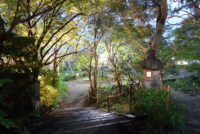
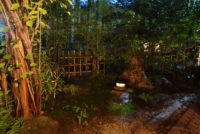
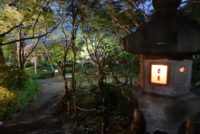

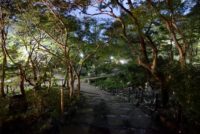
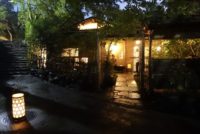
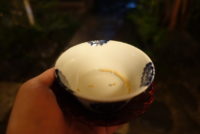

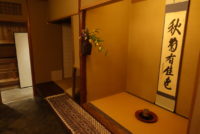
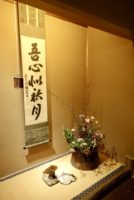

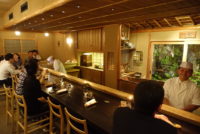
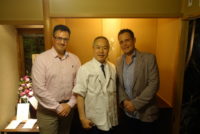


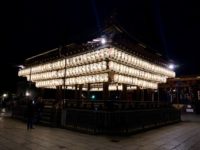
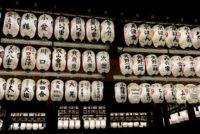
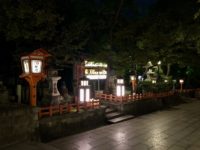
 My hobby-turned-passion began to evolve during my assignments to London where I was fortunate enough to be able to explore all the Michelin starred restaurants in my spare time and as a result, I gradually built up a catalogue of all these venues.
My hobby-turned-passion began to evolve during my assignments to London where I was fortunate enough to be able to explore all the Michelin starred restaurants in my spare time and as a result, I gradually built up a catalogue of all these venues.
Leave a Review of this Restaurant